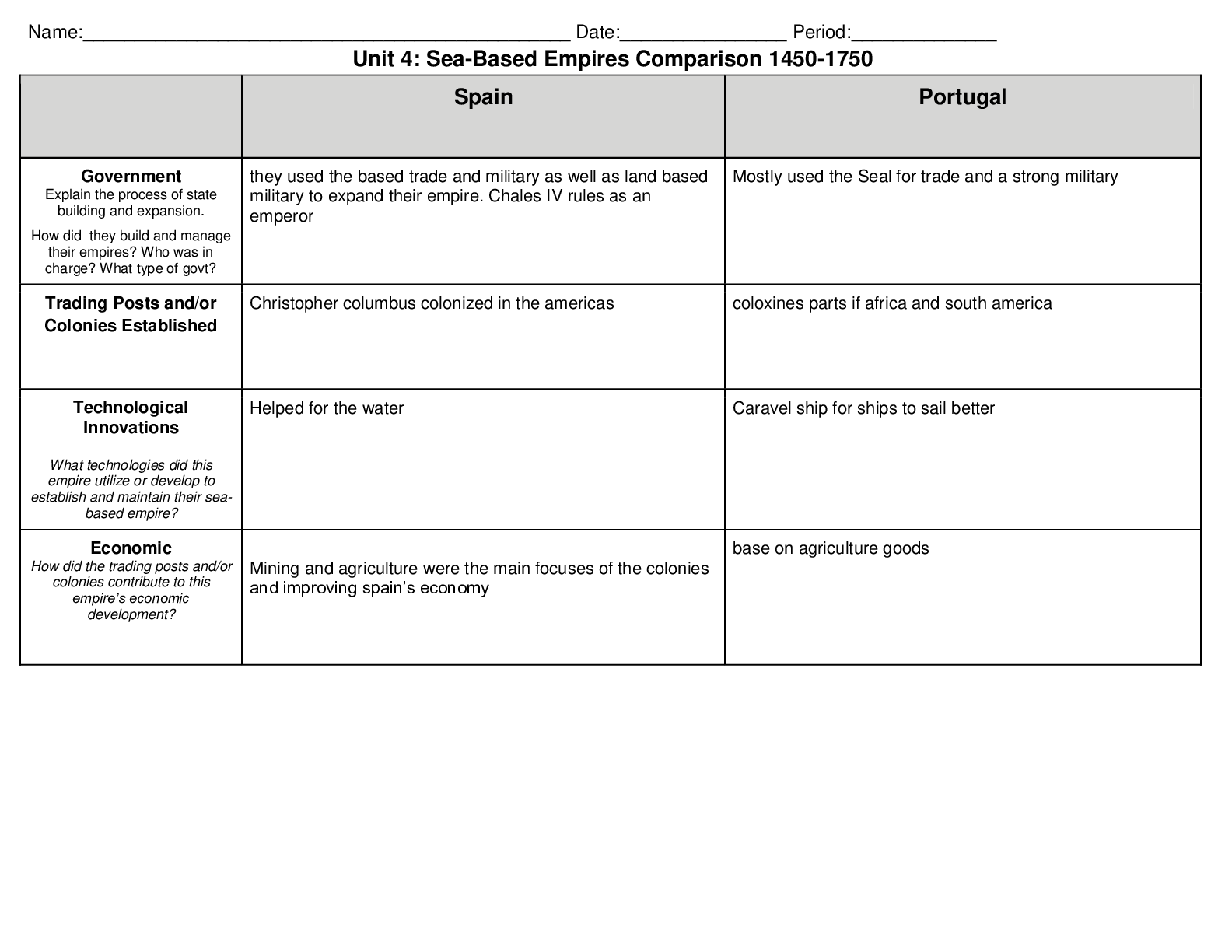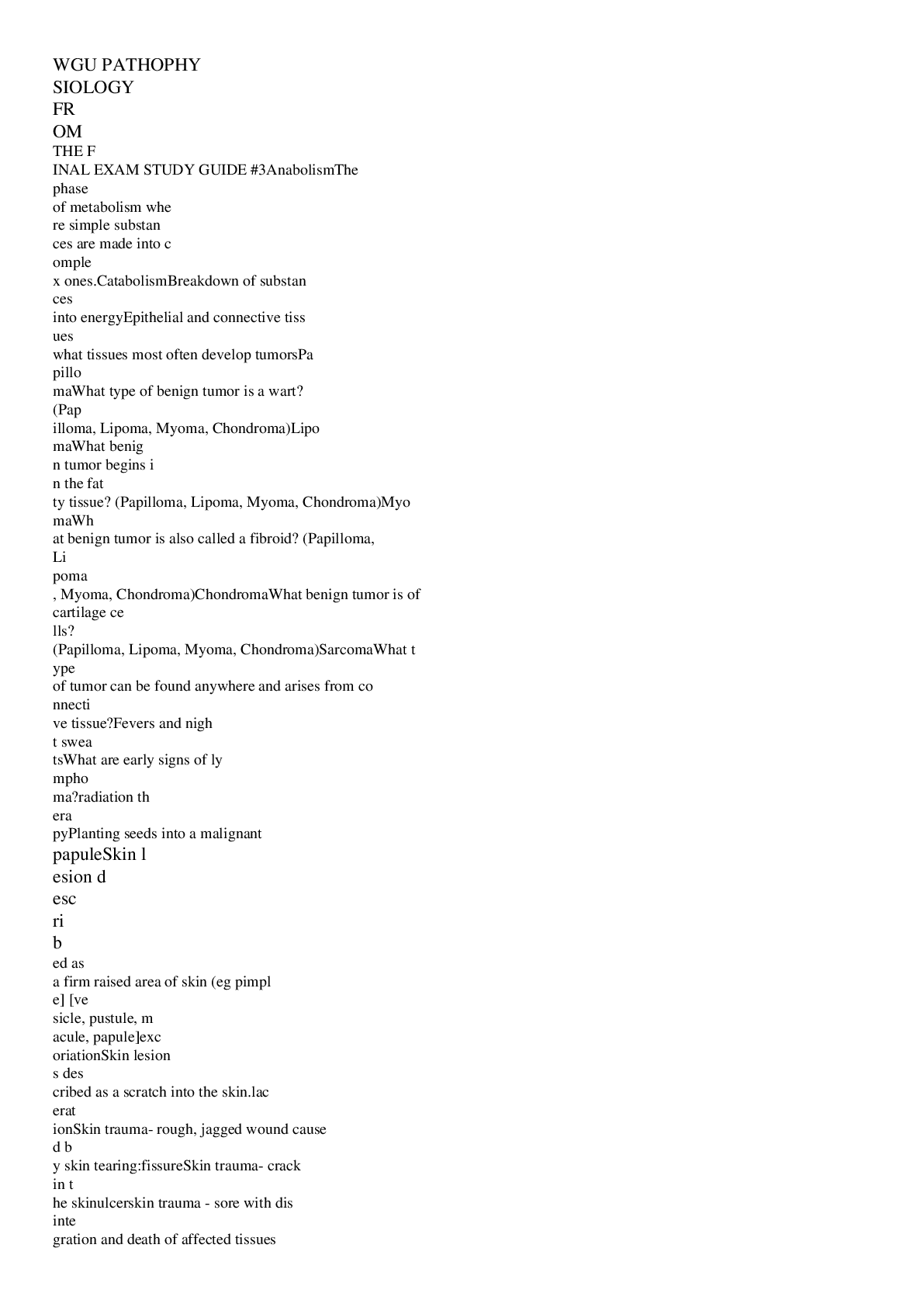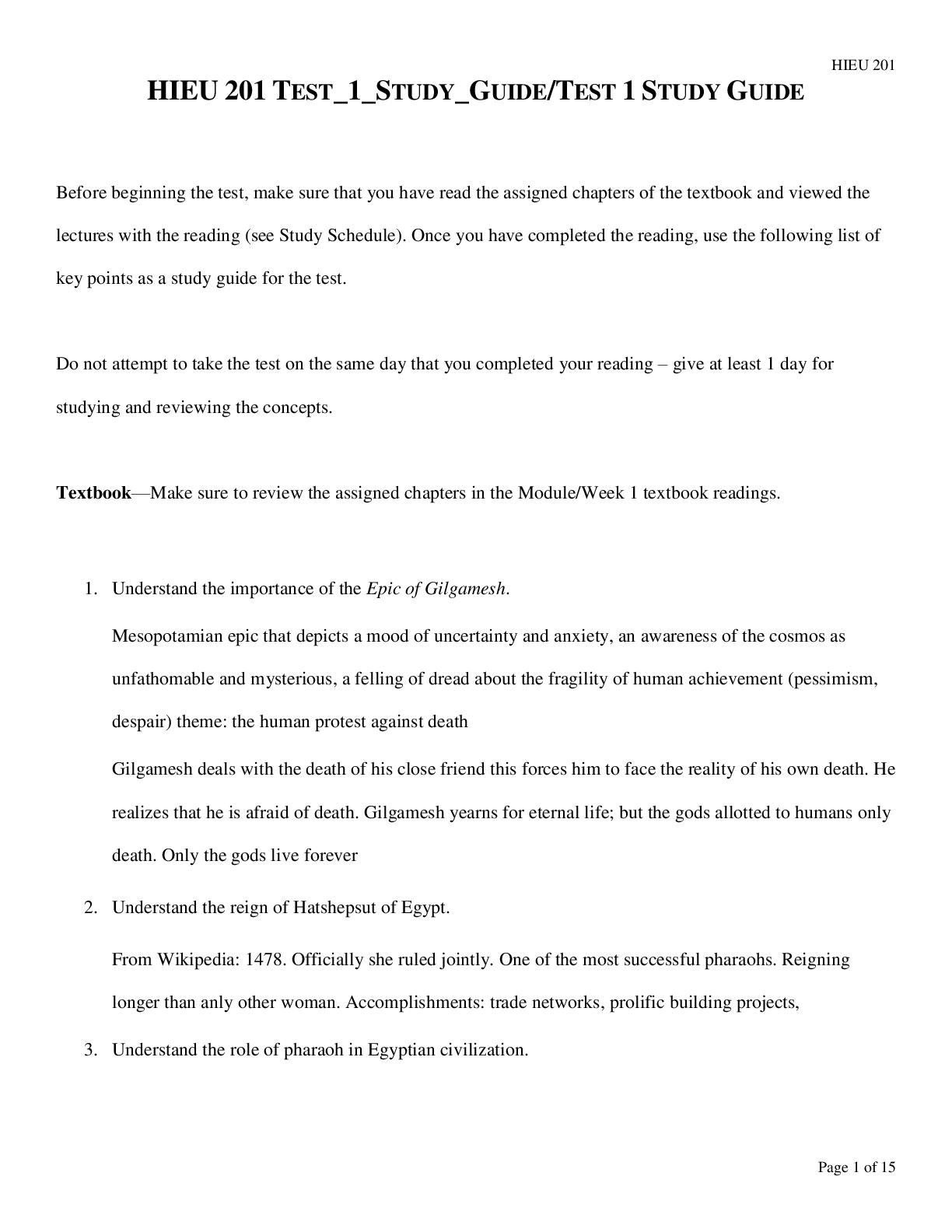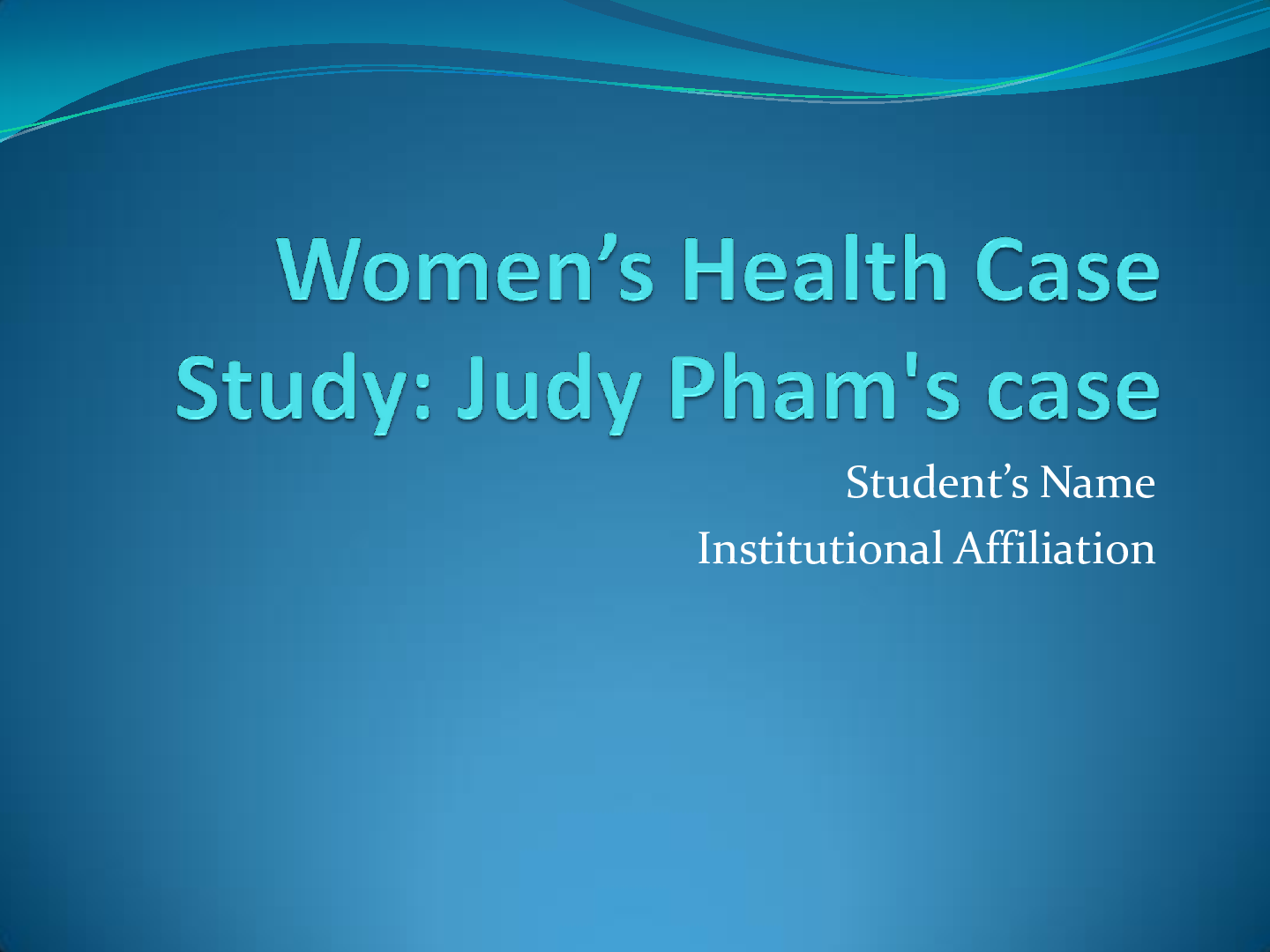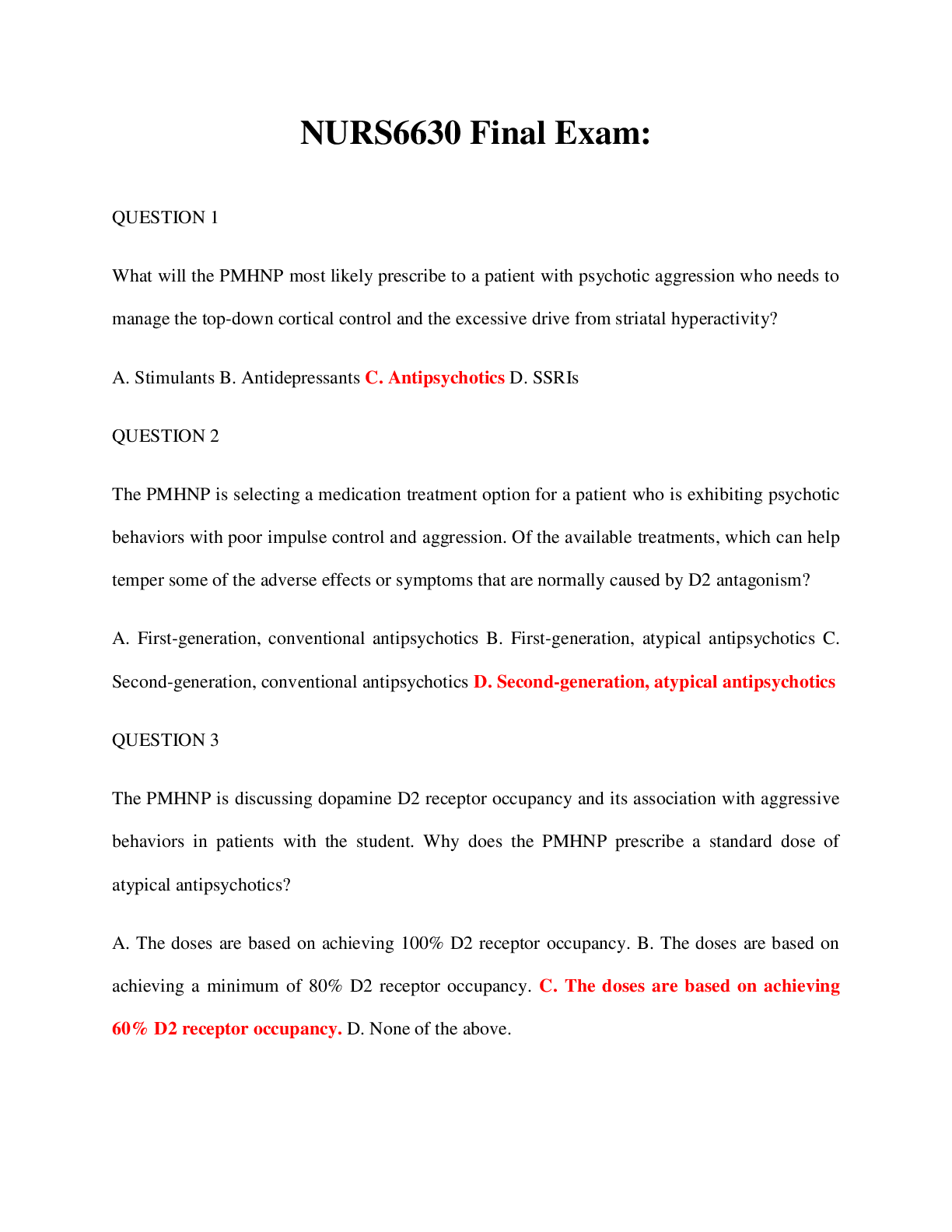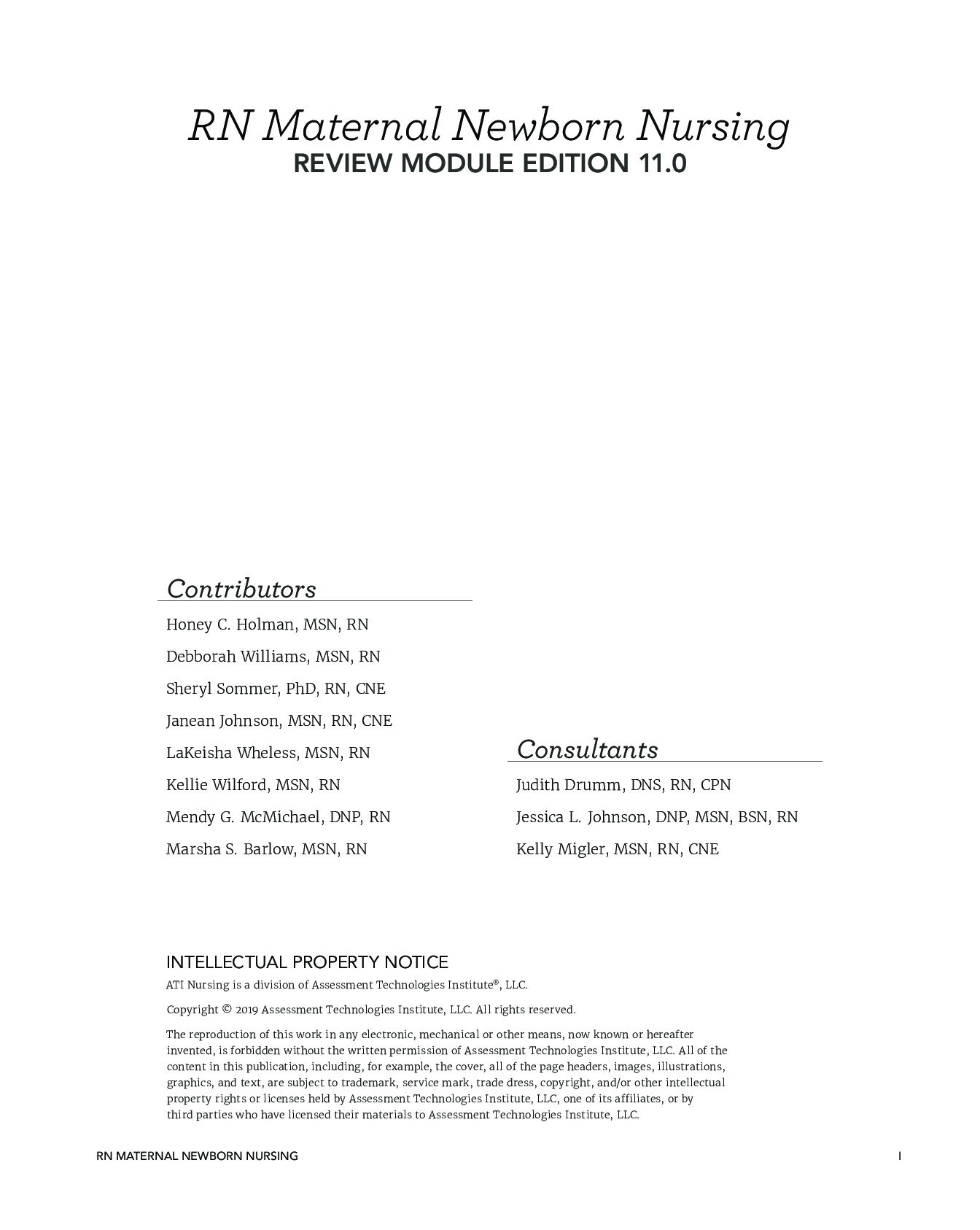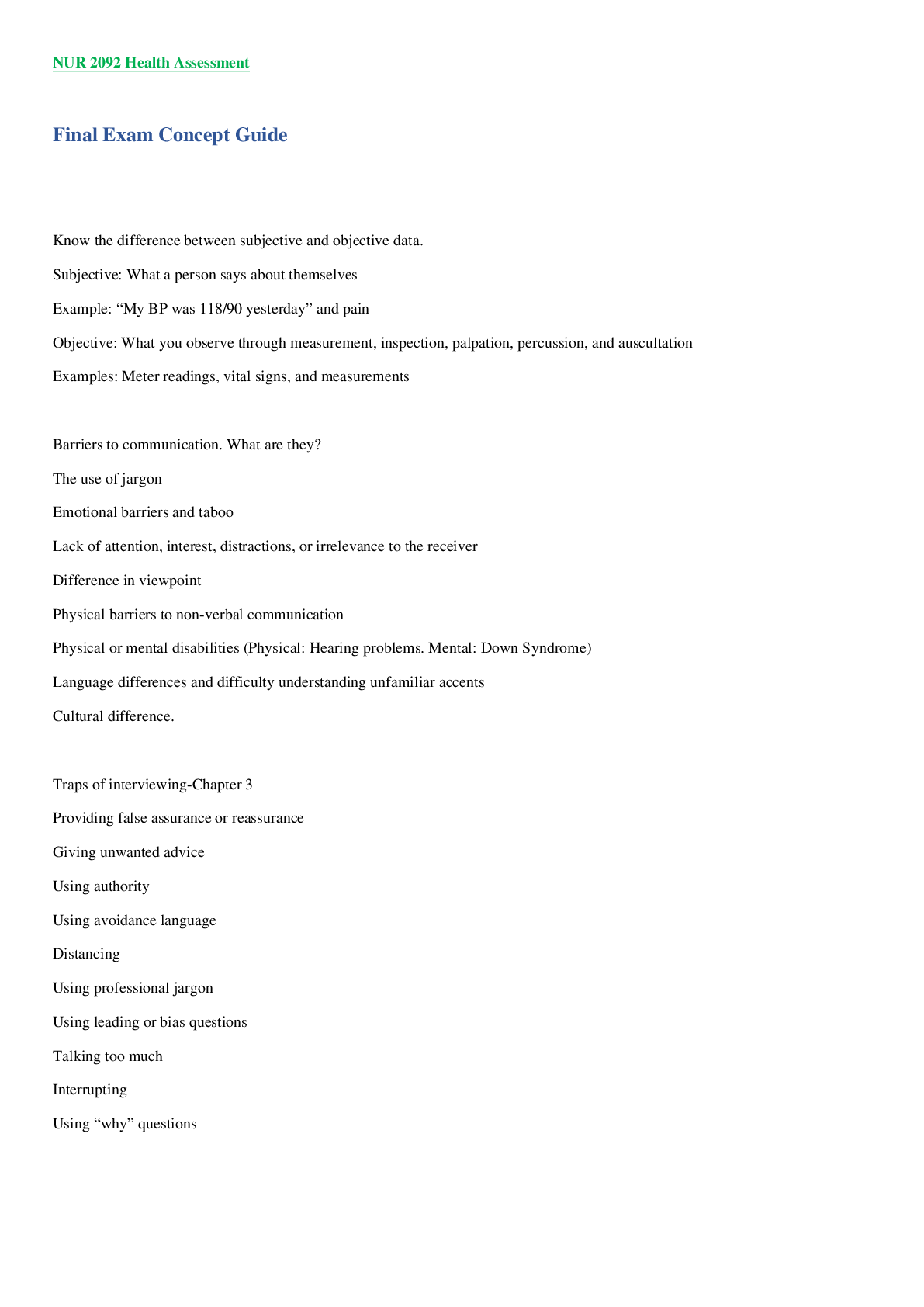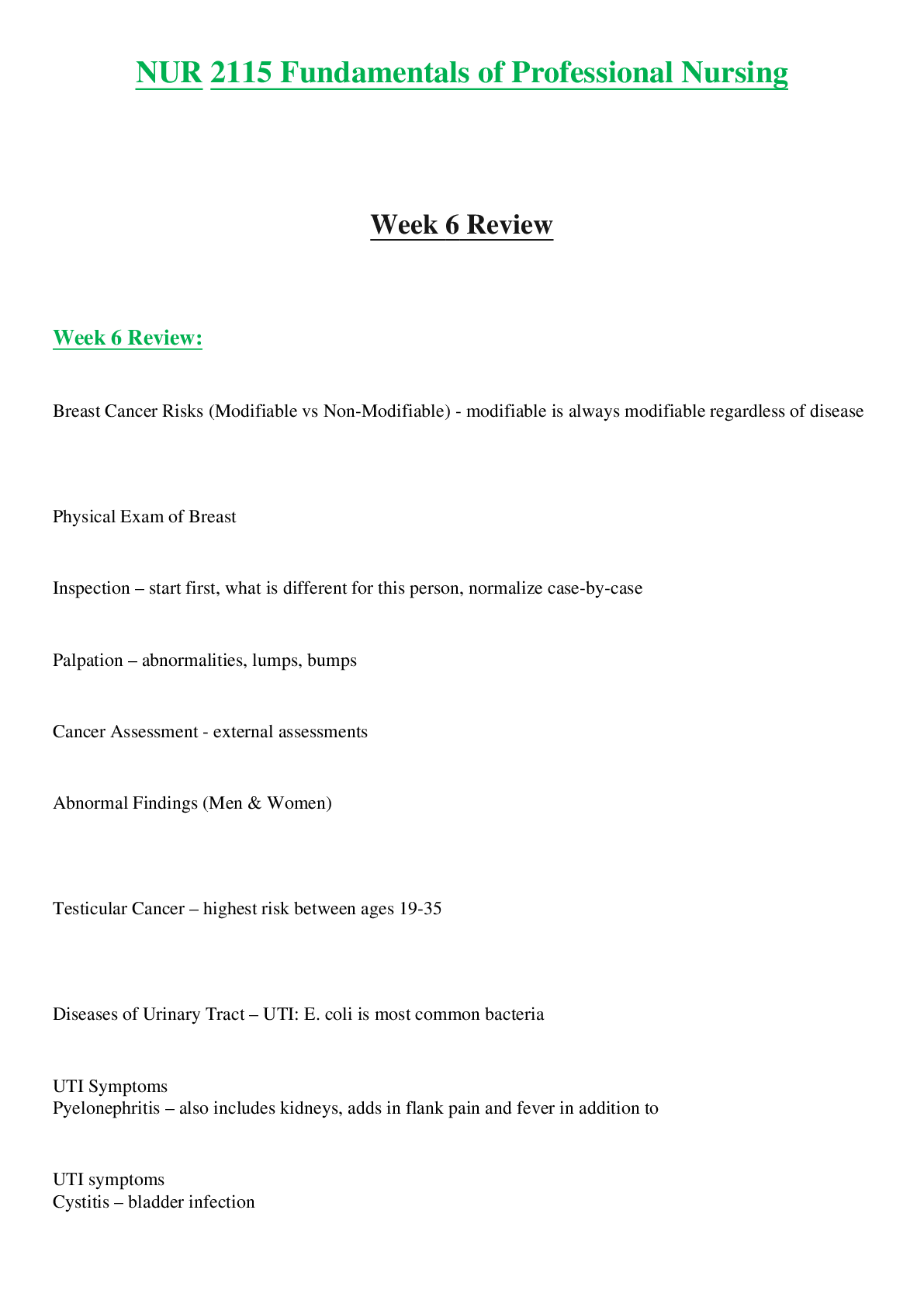*NURSING > STUDY GUIDE > Informatics Midterm Review Sheet for 2022/2023 COMPLETED A (All)
Informatics Midterm Review Sheet for 2022/2023 COMPLETED A
Document Content and Description Below
Informatics Midterm Review Sheet 1. General principles of Nursing Informatics: 2. Knowledge o Awareness and understanding of a set of information and ways that information can be made useful to su ... pport a specific task or arrive at a decision. This knowledge building is an ongoing process engaged in while a person is conscious and going about his or her normal daily activities. 3. Wisdom: Knowledge applied in a practical way or translated into actions; the use of knowledge and experience to heighten common sense and insight so as to exercise sound judgment in practical matters. Sometimes thought of as the highest form of common sense, resulting from accumulated knowledge or erudition (deep, thorough learning) or enlightenment (education that results in understanding and the dissemination of knowledge). Wisdom is the ability to apply valuable and viable knowledge, experience, understanding, and insight while being prudent and sensible. It is focused on our own minds; it is the synthesis of our experience, insight, understanding, and knowledge. Wisdom is the appropriate use of knowledge to solve human problems. It is knowing when and how to apply knowledge.4. Scientific Underpinning: The scientific underpinnings of practice provide the basis of knowledge for advanced nursing practice. These scientific underpinnings include sciences such as biology, physiology, psychology, ethics, and nursing. Nursing science, information science, and computer science 5. The Foundation of Knowledge Model The Foundation of Knowledge model is also introduced as the organizing conceptual framework of this text, and the model is tied to nursing science and the practice of nursing informatics. 6. Computer science: o Branch of engineering (application of science) that studies the theoretical foundations of information and computation and their implementation and application in computer systems. The study of storage/memory, conversion and transformation, and transfer or transmission of information in machines— that is, computers—through both algorithms and practical implementation problems. Algorithms are detailed, unambiguous action sequences in the design, efficiency, and application of computer systems, whereas practical implementation problems deal with the software and hardware. 7. Cognitive science: o Interdisciplinary field that studies the mind, intelligence, and behavior from an information processing perspective. 8. Information science o Information science enables the processing of information. This processing links people and technology. Humans are organic ISs, constantly acquiring, processing, and generating information or knowledge in their professional and personal lives. This high degree of knowledge, in fact, characterizes humans as extremely intelligent organic machines. The premise of this text revolves around this concept, and the text is organized on the basis of the Foundation of Knowledgemodel: knowledge acquisition, knowledge processing, knowledge generation, and knowledge dissemination. 9. Standard Terminology: o Standardized terminologies (STs) contribute to the development of knowledge because they ensure that all professionals share the same understanding or meaning of a given concept, to clarify communication, facilitate research, and provide structure for decision support tools and EHRs. As you look at the Foundation of Knowledge model, STs support knowledge acquisition, dissemination, generation, and processing. o STs are structured, controlled languages developed to represent concepts in a given domain in a clear, unambiguous fashion that conveys the exact same meaning for data, information, and knowledge across settings, regions, and even different countries. This consistency affords access to information and knowledge when it is needed without regard to the current model or period of care. STs are key to the development of an EHR in order to represent, communicate, exchange, reuse, and report data, information, and knowledge, including Meaningful Use criteria (Matney & Lundberg, 2013). 10. Informatics Competencies: A set of essential skills related to informatics deemed appropriate for various levels of nursing practice. One challenge that has been identified in the literature and continues to plague health care is the vast differences in computer literacy and information management skills that healthcare workers possess (Gassert, 2008; McNeil, Elfrink, Beyea, Pierce, & Bickford, 2006; Topkaya & Kaya, 2014). Gassert (2008) felt that new graduates were not adequately literate. Barton (2005) believed that new nurses should have the following critical skills: use e-mail, operate Windows applications, search databases, and know how to work with the institution-specific nursing software used for charting and medication administration. These skills should not be limited to just new nurses, but instead should be required of all nurses and healthcare workers. Staggers, Gassert, and Curran (2001) advocated that nursing students and practicing nurses should be educated on core NI competencies. Although information technology andinformatics concepts certainly need to be incorporated into nursing school curricula, progress in this area has been slow. In the 1980s, a nursing group of the International Medical Informatics Association convened to develop the first level of nursing competencies. While developing these competencies, the nursing group found that nurses fell in to one of the following three categories: (1) user, (2) developer, or (3) expert. These categories have since been expanded. Staggers and colleagues (2001) decided that the NI competencies developed in the 1980s were inadequate and needed to be updated. These authors reviewed 35 NI competency articles and 14 job descriptions, which resulted in 1,159 items that were sorted into three broad categories: (1) computer skills, (2) informatics knowledge, and (3) informatics skills. These items were then placed in a database, where redundant items were removed. When this process was completed, 313 items remained. When these items were then further subdivided, Staggers and colleagues, along with the American Medical Informatics Association (AMIA) work group, realized that these competencies were not universal to all nurses; thus, before it could be determined if the competency was an NI competency, nursing skill levels needed to be defined. The group determined that practicing nurses could be classified into four categories: (1) beginning nurse, (2) experienced nurse, (3) informatics nurse specialist, and (4) informatics innovator. Each of these skill levels needed to be defined before Staggers and colleagues (2001) could determine which level was the most appropriate for that skill set. Table 7- 1 provides the definition criteria for each skill level. Once the levels were defined, the group determined that 305 items were NI competencies and placed them into appropriate categories. 11. Information literacy: Ability to identify when information is needed as well as the skills to find, evaluate, and effectively use the same. Evaluation of online resources for quality Ability to search literature databases effectively 12. Health literacy: The acquisition of knowledge that promotes the ability to understand and to manage one’s health.13. Meaningful Use The American Recovery and Reinvestment Act of 2009 specifies three main components of meaningful use: (1) the use of a certified electronic health record (EHR) in a meaningful manner, such as e-prescribing; (2) the use of certified EHR technology for electronic exchange of health information to improve quality of health care; and (3) the use of certified EHR technology to submit clinical quality and other measures. The criteria for meaningful use will be staged in three steps. Stage 1 (2011–2012) set the baseline for electronic data capture and information sharing. Stage 2 (2013) and Stage 3 (expected to be implemented in 2015) continue to expand on this baseline and be developed through future rule making. 14. Patient-centered Information Systems: Patient-centered information systems focused on collecting data and disseminating information related to direct care. Several of these systems have become mainstream types of systems used in health care. The four types of systems most commonly found in healthcare organizations include (1) clinical documentation systems, (2) pharmacy information systems, (3) laboratory information systems, and (4) radiology information systems. 15. Clinical Decision Support Systems: A computer-based program designed to assist clinicians in making clinical decisions by filtering or integrating vast amounts of information and providing suggestions for clinical intervention. May also be called a clinical decision support system (CDSS). Clinical decision support (CDS) tools are designed to help sift through enormous amounts of digital data to suggest next steps for treatments, alert providers to available information they may not have seen, or catch potential problems, such as dangerous medication interactions. Alert fatigue and clinical burnout are common byproducts of poorly implemented clinical decision support features that overwhelm users with unimportant information or frustrating workflow freezes that require extra clicks to circumvent. 16. Electronic Medical Records: (EHR) Computer-based data warehouses or repositories of information regarding the health status of a client, which are replacing the former paper-based medical records; they are the systematic documentation of a client’s health status and health care in a secured digital format, meaning that they can be processed, stored, transmitted, and accessed by authorized interdisciplinary professionals for the purpose of supporting efficient, high-quality health care across the client’s healthcare continuum. Also known as electronic medical records (EMRs). 17. Human-Technology Interface: The hardware and software through which the user interacts with any technology (e.g., computers, patient monitors, telephone). 18. Health Information Technology: Is comprised of "hardware, software, integrated technologies or related licenses, intellectual property, upgrades, or packaged solutions sold as services that are designed for or support the use by healthcare entities or patients for the electronic creation, maintenance, access, or exchange of health information" (p.149). HIT has been promoted as a key element in the National Quality Strategy (NQS) to achieve three aims: better care, affordable care, and healthy populations and communities. 19. Alarm fatigue: o Multiple false alarms by smart technology that cause workers to ignore or respond slowly to them. 20. Digital natives: o A digital native is an individual who was born after the widespread adoption of digital technology. The term digital native doesn't refer to a particular generation. Instead, it is acatch-all category for children who have grown up using technology like the Internet, computers and mobile devices. 21. Information Literacy Competency Standards for Nursing: Information Literacy Competency Standards for Nursing According to the Information Literacy Competency Standards for Nursing (2013), an information-literate individual can demonstrate the following: Determine the extent of information needed Access the needed information effectively and efficiently Critically evaluate the procured information and its sources, and as a result, decides whether or not to modify the initial query and/or seek additional sources and whether to develop a new research process Use information effectively to accomplish a specific purpose Understand the economic, legal, and social issues surrounding the use of information and access and use information ethically and legally Information Literacy As discussed in the lesson from Week 2, the TIGER initiative identified three components for the TIGER nursing informatics competencies model: (a) basic computer competencies, (b) information literacy, and (c) information management. Additionally, health care providers must be able to determine what information is needed, utilize the appropriate resources to find the information, use valid resources to critique the information, provide evidence-based care based on this information, and evaluate the outcomes of the process. Information literacy refers to the use of digital technology to locate, navigate, manage, integrate, evaluate, create, and effectively communicate in a rapidly changing information environment in the pursuit of knowledge. The National Organization of Nurse Practitioner Faculties (NONPF) Core Competencies advocated incorporating competencies from technology informatics with Advanced Practice Nursing (APN) curricula to teach nurse practitioner students how to use available technology to enhance the safety and health outcomes of their patients (NONPF, 2017, p. 8). The Essentials of Master's Education in Nursing written by the AmericanAssociation of Colleges of Nursing (AACN) (2013) recognized that master's-prepared nurses use technologies to deliver and coordinate patient care as well as to enhance communication. Graduate level Quality and Safety Education for Nurses (QSEN) Competencies recommended the use of information and technology to communicate, manage knowledge, mitigate error, and support decision making (Dolansky & Moore, 2013). The National League for Nursing (NLN) Program Outcomes and Competencies for Graduate Academic Nurse Educator Preparation are "grounded in the core values of the NLN - caring, integrity, diversity, and excellence. The concepts of evidence-based teaching, the science of learning, research in nursing education, and personal and professional development are reflective of these values assuming different dimensions across program type" (NLN, 2017, p.2). Each organization incorporates aspects of information and/or literacy with core competencies; however, the extent of inclusion and items differ vastly. The most important aspects of information literacy reflect information discovery, retrieval, and delivery as well as the ability to acquire, process, generate, and disseminate knowledge in ways that help those managing the knowledge reevaluate and rethink what an individual understands. The goals of the Information Literacy Competency Standards for Higher Education (2013), published by the American Library Association (ALA) are a response to the changing perceptions of how information is created, evaluated, and used. 22. HITECH Act: HITECH strengthened HIPAA security and privacy rules and provided monies and incentives to increase the adoption of EHRs that meet eligibility requirements for Meaningful Use. The underlying idea was that financial incentives would encourage the adoption of EHR systems, moving the United States closer to a national infrastructure that would support an EHR for every American and provide information via Meaningful Use core criteria that could be used to collect information that could be used to improve population health. Providers that comply with Meaningful Use requirements qualify for additional reimbursement monies over a period of several years. Penalties will be imposed for providers that do not use approved technology to comply with Meaningful Userequirements. Providers have some latitude on the core criteria that are met from a prescribed set. Funds allocated by HITECH also support regional centers that guide providers as they adopt EHRs and offer technical support. Meeting the criteria for meaningful use (MU) of an EHR is one of the methods of Medicare and Medicaid reimbursement associated with the HITECH Act. The Centers for Medicare & Medicaid Services (CMS) serves as the primary regulator, with each individual state dictating the Medicaid operations within its jurisdiction (Health Information Technology for Economic and Clinical Health Act, 2009). This statute identifies the eligible providers, including APNs, for the Medicare and Medicaid reimbursement structure. Such prescriptive language does not recognize, embrace, or support the interprofessional team and the critical and collaborative work completed by such an entity to improve access, improve health care, and reduce costs. The third and final stage of MU is currently underway and entails a single set of criteria focused on the advanced use of EHR systems. CMS decided to move away from the staged approach and will require all providers (including first-time participants) to satisfy the objectives and measures of Stage 3 by 2018. Beginning in 2019, the MU program will transition into a new merit-based incentive payment system (MIPS) program established by the Medicare Access and CHIP (Children's Health Insurance Program) Reauthorization Act. The Stage 3 requirements and objectives will be maintained (Resnick, Meara, Peltzman, & Gilley, 2016). Throughout the MU phases, providers and hospitals that implement EHRs meeting federal standards outlined under the meaningful use regulatory requirements are financially incentivized with payments from CMS. The incentive program started in 2011 and extends over several years with the time table determined by whether a provider elects to access the Medicaid or Medicare incentive program. Hospitals can access both Medicaid and Medicare incentives, and in many cases these incentives equate to millions of dollars. 23. TIGER-based Nursing Informatics Competencies Model:The TIGER (2007) initiative identified steps toward a 10-year vision and stated a key purpose: ―to create a vision for the future of nursing that bridges the quality chasm with information technology, enabling nurses to use informatics in practice and education to provide safer, higher-quality patient care‖ (p. 4). The pillars of the TIGER vision include the following: Management and Leadership: Revolutionary leadership that drives, empowers, and executes the transformation of health care. Education: Collaborative learning communities that maximize the possibilities of technology toward knowledge development and dissemination, driving rapid deployment and implementation of best practices. Communication and Collaboration: Standardized, person-centered, technology-enabled processes to facilitate teamwork and relationships across the continuum of care. Informatics Design: Evidence-based, interoperable intelligence systems that support education and practice to foster quality care and safety. Information Technology: Smart, people-centered, affordable technologies that are universal, useable, useful, and standards based. Policy: Consistent, incentives-based initiatives (organizational and governmental) that support advocacy and coalition-building, achieving and resourcing an ethical culture of safety. Culture: A respectful, open system that leverages technology and informatics across multiple disciplines in an environment where all stakeholders trust each other to work together toward the goal of high quality and safety (p. 4). If there are any doubts about what these competencies might be, The Technology Informatics Guiding Education Reform (TIGER) Initiative (2009), compiled and posted a list of competencies on its website that every nurse should display. TIGER first came into being with an invitation-only summit, Evidence and Informatics Transforming Nursing, in 2006, which invited leaders from nursing, government, informatics and technology organizations, and other stakeholders to come together to create a vision to transform nursing to bridge the quality chasm using technology (TIGER, 2013a). TIGER continues its focus on the use of informatics and technology to make healthcare safer, more effective, efficient, patient-centered, timely and equitable by interweaving evidence and technology seamlessly into practice, education and research fostering a learning healthcare system and is a useful resource (The TIGER Initiative, 2013b). The American Association of Colleges of Nursing has also identified informatics competencies expected for each program graduate in their Essentials documents as well as across walk document that provides a quick comparison by program level (American Association of Colleges of Nursing, n.d.). As defined in McGonigle and Mastrian (2018) by the Health Information Technology for Economic and Clinical Health (HITECH) Act, Health information technology (HIT) is comprised of "hardware, software, integrated technologies or related licenses, intellectual property, upgrades, or packaged solutions sold as services that are designed for or support the use by healthcare entities or patients for the electronic creation, maintenance, access, or exchange of health information" (p.149). HIT has been promoted as a key element in the National Quality Strategy (NQS) to achieve three aims: better care, affordable care, and healthy populations and communities. The Technology Informatics Guiding Education Reform (TIGER) Initiative was created in 2004 to collaborate with nursing stakeholders to create a vision, action, and strategies to improve nursing education, practice, and patient care delivery through the use of health information technology. TIGER formed an Informatics Competency Collaborative, which define the competencies recommended for the NI discipline (TIGER, 2010). 24. Nursing Informatics A specialty that integrates nursing science, computer science, and information science to manage and communicate date, information, knowledge, and wisdom in nursing practice [Show More]
Last updated: 3 years ago
Preview 1 out of 11 pages

Buy this document to get the full access instantly
Instant Download Access after purchase
Buy NowInstant download
We Accept:

Reviews( 0 )
$5.50
Can't find what you want? Try our AI powered Search
Document information
Connected school, study & course
About the document
Uploaded On
Jan 29, 2021
Number of pages
11
Written in
All
Additional information
This document has been written for:
Uploaded
Jan 29, 2021
Downloads
0
Views
99


